We are a specialized deep well drilling company with a reputation of having an innovative, persevering approach to solving complex problems encountered in the drilling process.
Clients who have benefited from our successful drilling, range from private property/land owners, to small rural communities, farmers, mining houses and government/councils, specialist engineers and industrial corporations.
Drilling
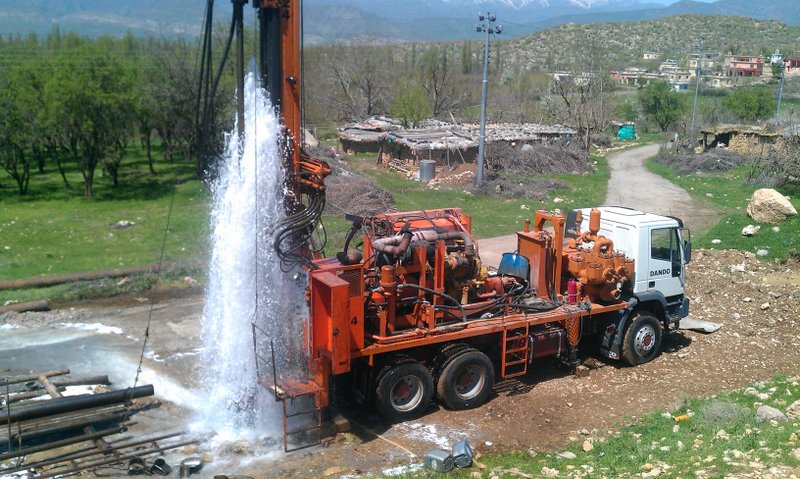
Water borehole drilling is the process of creating a deep, narrow hole in the ground to access underground water sources, known as aquifers. These aquifers are natural water reservoirs formed over time beneath the earth's surface, often trapped between layers of rock, gravel, or sand. Boreholes are an essential solution in areas where surface water is unreliable, polluted, or simply unavailable. Once a borehole is successfully drilled, it provides a sustainable and independent source of clean water for drinking, irrigation, livestock, industrial use, or domestic supply. The drilling process typically begins with a site survey, where a hydrogeologist or water engineer evaluates the area to determine the best location to drill. This involves identifying the depth of the water table, the type of rock or soil formations present, and estimating the expected yield of water. Based on this data, the appropriate drilling method is selected.
Once operational, the borehole can provide a consistent and high-quality water supply, especially when regularly maintained and periodically tested for purity.Water boreholes offer numerous benefits: they reduce reliance on municipal water systems, cut long-term water costs, and provide access in remote or rural areas. However, the initial investment can be significant, and drilling must be done professionally to avoid contamination or hitting a dry spot. With proper construction and maintenance, a borehole can last decades, making it a valuable asset for homes, farms, businesses, and communities alike.
Installation
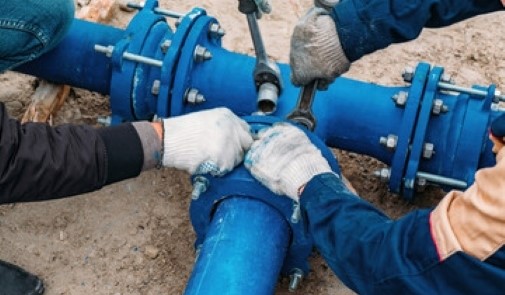
Water borehole installation is the process of setting up a fully functional water supply system by drilling into the ground to reach underground water and installing the necessary components to extract and deliver that water to the surface. It involves several technical stages, from choosing the right location to setting up the pumping system. This process must be handled professionally to ensure long-term reliability, safety, and water quality.
The installation begins with a site assessment and hydrogeological survey. The geology, soil type, and depth of the water table are evaluated, and using this information, the best drilling spot where a water-bearing aquifer is likely to be found is selected and drilled. A submersible pump is installed at the appropriate depth. Electrical connections, pressure controls, and any water treatment systems are installed at this stage. Once everything is set up and verified, the system is ready for use.
maintenace
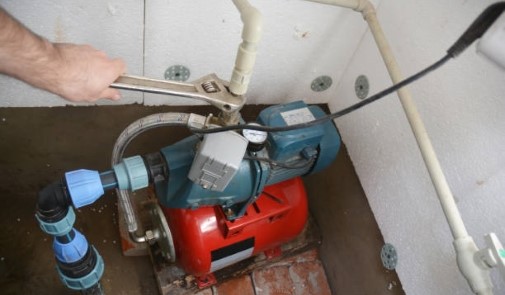
Water pump maintenance is essential to ensure the efficient, long-term operation of any borehole or water supply system. The pump is the heart of the system—it pulls water from deep underground and delivers it where it’s needed. Like any mechanical device, water pumps are subject to wear and tear, especially when used continuously or exposed to minerals and debris in the water. Regular maintenance not only helps prevent unexpected breakdowns but also extends the lifespan of the pump and ensures consistent water pressure and quality. The first step in pump maintenance is routine inspection. This includes checking for unusual noises or vibrations, monitoring the flow rate, and observing any changes in water pressure. A drop in performance could indicate clogs, worn-out parts, or electrical issues. It’s also important to inspect the motor and electrical connections for signs of overheating, corrosion, or loose wiring, as electrical faults are one of the most common reasons pumps fail. Another key aspect of maintenance is cleaning and flushing the system. Over time, sediment, iron, and other minerals can build up inside the pump and pipes, reducing efficiency and potentially damaging the internal components. Periodic flushing helps remove these deposits. In areas with hard water or high mineral content, it may also be necessary to treat the water or install filtration systems to reduce buildup and protect the pump. Lubrication of moving parts is also essential. Some pumps have bearings or seals that require lubrication to reduce friction and heat. Failing to lubricate these parts can lead to premature wear and costly repairs. It's important to follow the manufacturer’s guidelines for lubrication intervals and the type of lubricant to use. In addition to mechanical components, checking the pressure switch and control box is crucial. These devices regulate when the pump turns on and off. A malfunctioning switch can cause the pump to run too often or not at all, leading to either energy waste or water supply issues. Regular calibration and testing of these controls ensure smooth operation and protect the system from overwork. Finally, scheduled servicing by a professional technician is recommended at least once a year. Professionals can perform detailed diagnostics, test pump performance, clean or replace filters, inspect the borehole casing, and ensure all safety and efficiency standards are met. They can also detect problems that aren’t immediately visible, preventing major failures before they occur.
well points
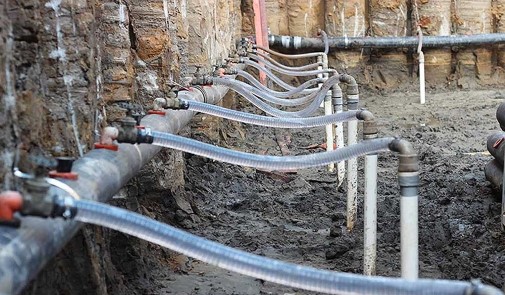
A well point is a small-diameter, shallow well used to extract groundwater, typically from unconfined or near-surface aquifers. It consists of a slender pipe with a screened tip—often referred to as a well point screen—that is driven or jetted into the ground to allow water to enter while keeping out sand and debris. These systems are most commonly used for temporary dewatering purposes at construction sites, small-scale water supply for homes or gardens, or for lowering groundwater levels during excavation projects. Well point systems are particularly valuable in construction and civil engineering where groundwater needs to be controlled. For example, if a foundation or trench needs to be dug below the water table, well points can be installed around the site and connected to a suction pump that continuously removes water, keeping the area dry. This method, known as dewatering, ensures stability, safety, and ease of construction.
aintenance of a well point system involves regular inspection of the screen for clogging, ensuring the suction pump is functioning correctly, and monitoring the water quality. Over time, sediment or minerals may build up around the screen, which can reduce efficiency and require cleaning or replacement.
water storage
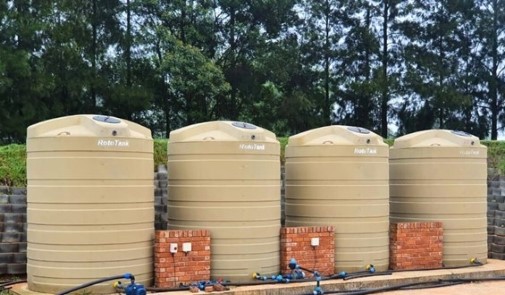
Storage tanks are essential components in water supply systems, designed to hold and store water for later use. They act as reservoirs, ensuring that water is available when needed, whether for domestic use, irrigation, industrial processes, or emergency reserves such as fire protection. Storage tanks provide both convenience and reliability by maintaining a consistent water supply even when the primary source is interrupted or demand exceeds immediate supply. There are various types of storage tanks, including above-ground and underground tanks, each suited to different needs and environments. Above-ground tanks are the most common, especially in rural and residential settings. They are easy to install, monitor, and maintain. Underground tanks, on the other hand, are often used where space is limited or aesthetics are a concern, though they require more complex installation and are harder to inspect. Storage tanks also vary in shape and material—ranging from cylindrical and rectangular designs to vertical or horizontal configurations, and built from plastic, fiberglass, concrete, or steel. One of the key functions of a water storage tank is pressure management. In systems that rely on gravity, elevated tanks create water pressure by allowing gravity to move water through the pipes. This is especially common in municipal and rural water systems. In pressurized systems, tanks are often paired with pumps and pressure regulators to ensure a steady flow rate, preventing damage to fixtures and ensuring user comfort. Storage tanks also play a crucial role in water treatment and quality control. Some tanks are equipped with internal coatings, filters, or treatment devices to prevent contamination and algae growth. In rainwater harvesting systems, storage tanks collect and store rainwater for filtration and reuse. Tanks must be properly sealed and regularly maintained to avoid the buildup of bacteria, sediment, or chemical imbalances that could affect water safety. The size of the storage tank depends on the intended use and daily water demand. A household might need a 1,000–5,000 liter tank, while a commercial farm or industrial facility could require tanks with capacities ranging from tens of thousands to millions of liters. Proper sizing helps avoid water shortages during high-demand periods and ensures sufficient reserves in case of drought or pump failure.
Filtration System
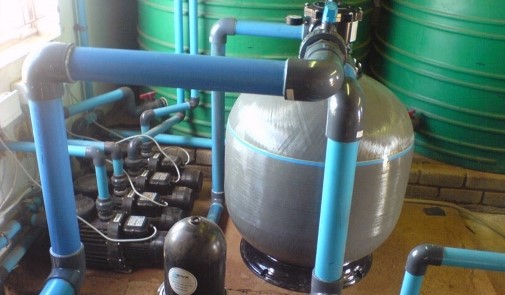
A filtration system is a vital component in water treatment, designed to remove impurities, contaminants, and unwanted particles from water. Its primary purpose is to improve water quality—making it safe for drinking, cooking, industrial use, or irrigation. Filtration can also enhance taste, eliminate odors, and protect plumbing systems and appliances from damage caused by sediment, minerals, and other harmful substances. Filtration systems come in many forms, ranging from simple household units to complex industrial setups. At its core, a filtration system typically includes one or more filter media—such as sand, gravel, activated carbon, or specialized membranes—that trap particles as water flows through. These filters are selected based on the type of contaminants being targeted. For instance, sediment filters remove dirt and rust; carbon filters eliminate chlorine, odor, and some chemicals; and reverse osmosis systems are capable of filtering out bacteria, heavy metals, and dissolved salts. In domestic settings, filtration systems are often installed at the point of use (like under a kitchen sink) or at the point of entry, treating all water entering a building. Point-of-use systems are more compact and tailored for drinking water, while whole-house systems ensure all faucets, showers, and appliances receive filtered water. In commercial or municipal systems, filtration is typically more advanced and multi-staged, combining mechanical, chemical, and biological processes to treat large volumes of water efficiently. One of the most advanced forms of filtration is reverse osmosis (RO), which forces water through a semi-permeable membrane to remove very fine particles, including viruses, bacteria, and dissolved solids. RO systems are widely used in both home and industrial applications but require pre-filtration and regular maintenance to function properly. Other advanced technologies include UV purification (to kill pathogens), ion exchange (to soften hard water), and ultrafiltration membranes. Maintenance of filtration systems is critical to their performance. Filters must be cleaned or replaced periodically, as clogged or saturated filters can restrict water flow and become breeding grounds for bacteria. Some modern systems feature indicators or automatic shut-offs when maintenance is due, helping users ensure water remains clean and safe at all times.






